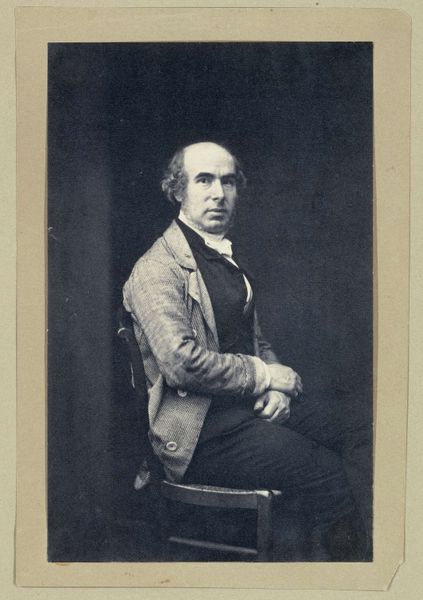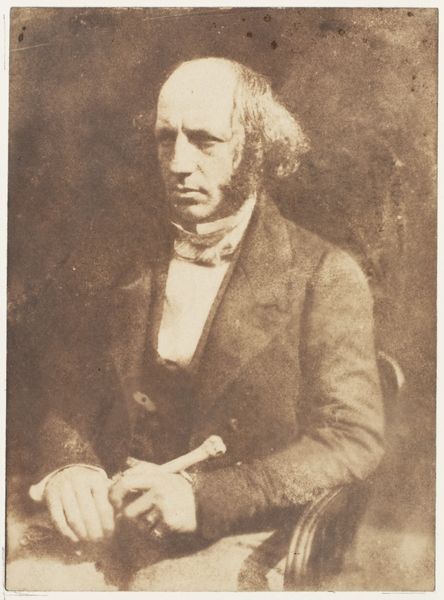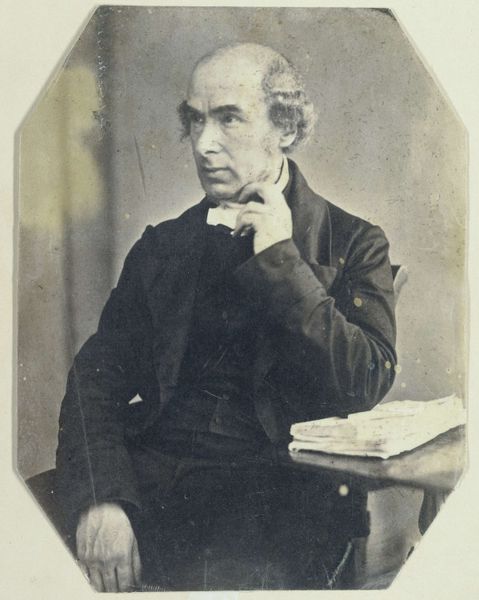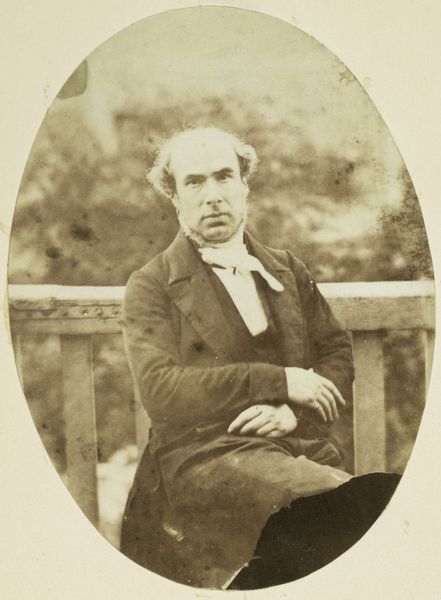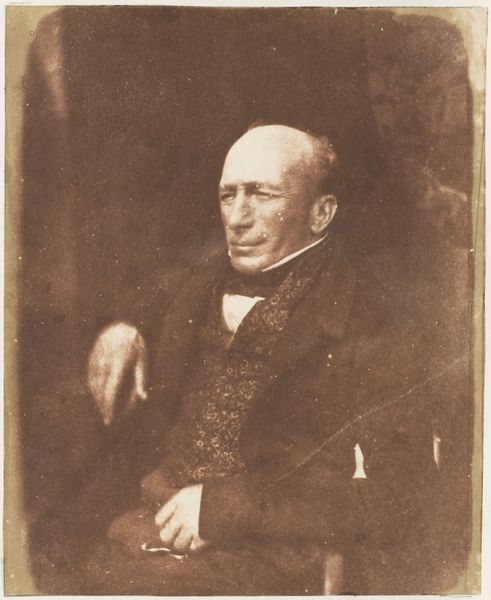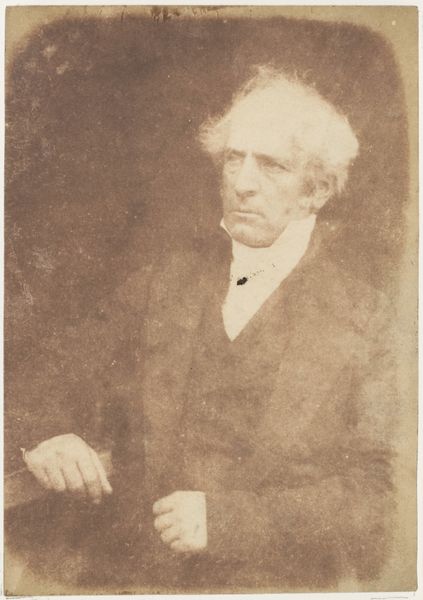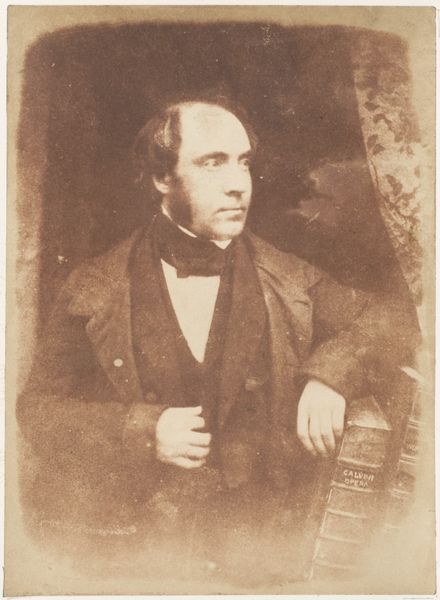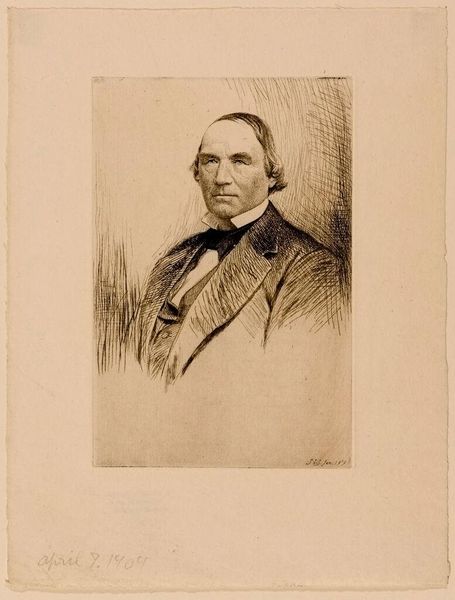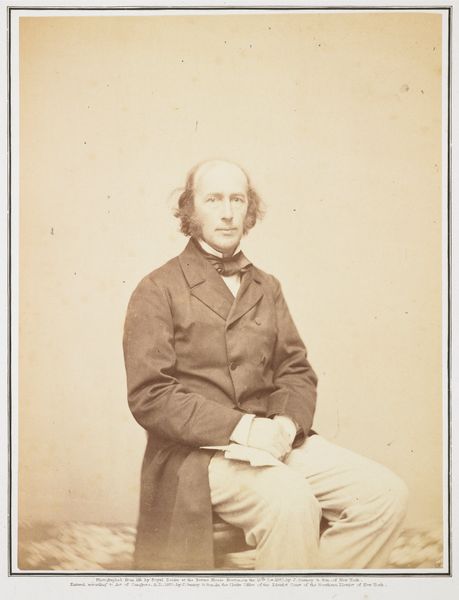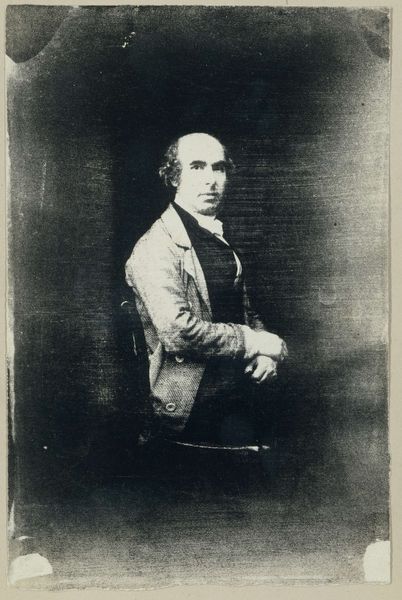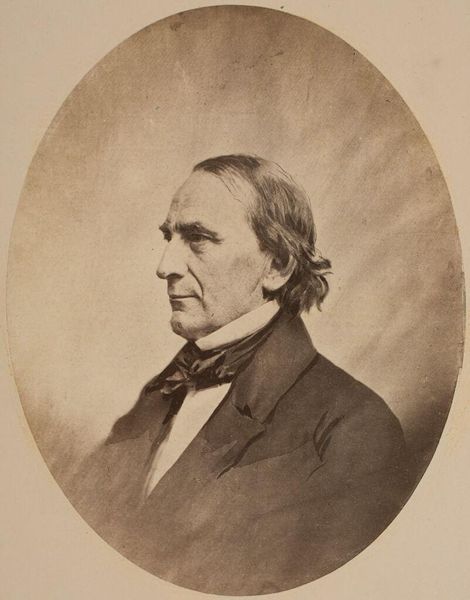
Dimensions: height 169 mm, width 114 mm
Copyright: Rijks Museum: Open Domain
Curator: Oh, this is intriguing. What do you make of it? It is a self-portrait by Eduard Isaac Asser, created sometime between 1854 and 1855. It's a daguerreotype, currently residing here at the Rijksmuseum. Editor: Immediately, it strikes me as quite…serious. Almost mournful. The subject's pose—arms crossed tightly, a direct but somber gaze—speaks of a weighty introspection, doesn't it? A real Romantic sensibility seems to imbue it, almost reminiscent of a Byronic hero. Curator: Absolutely. Daguerreotypes were revolutionary, weren't they? It’s interesting to consider how photography, still quite nascent, began shaping identity and its representation. Here we have Asser, not just documented, but actively constructing his self-image within the confines of a photographic plate. This piece enters dialogue with a rising middle class' need to affirm themselves via representational strategies once afforded to nobility only. Editor: That makes me wonder: what aspects of himself was he consciously trying to project? There's a deliberate stillness about it; the lack of background detail draws all the attention to his face and hands, highlighting the textures, wrinkles… mortality itself, almost. What choices did he have? Curator: The fact that he, himself, was deeply engaged in the burgeoning culture of photography changes the stakes quite a bit, I suspect. A Dutch lawyer and writer as well as a pioneer of photography… How does someone deeply entwined with law and letters look upon their own likeness rendered not by the artist's brush but by the alchemy of light and chemistry? And what institutions is it serving by the mid-19th century? Editor: It's more than just documentation; it feels like a careful construction, an authored self, laid bare before the lens, you know? Almost a statement. So, the image is more about agency within his social reality and the historical forces around the portraitist. Fascinating. Curator: Indeed, there is the question of visibility—literally who can access and create these images—and also how that access, or lack thereof, perpetuates power. Thank you. It offers so much in such stillness. Editor: The shadows are alive! So much to unpack and think about… thank you!
Comments
No comments
Be the first to comment and join the conversation on the ultimate creative platform.
